In Windows 7, there is a compact language indicator, which is located near the system tray (notification area) and comes with an optional language bar. Unlike Windows 7, Windows 10 comes with a different indicator for languages. It occupies more space on the taskbar and is designed for touch screens. Starting with Windows 10 build 17074, the Language options were moved from the Control Panel to the Settings app. Here is how to use Settings to enable the language bar.
Advertisеment
If you upgraded to Windows 10 Build 17074 or above, its new language options can look strange to you. Unlike previous releases, it does not include the Language settings UI in the Control Panel. Now you have to use Settings to configure language settings in Windows 10.
By default, Windows 10 comes with a touch-friendly language indicator in the notification area on the taskbar. If you are a desktop user, you might want to enable the more compact classic language bar instead of the default oversized language indicator.
To enable the language bar in Windows 10, do the following.
- Open Settings.
- Go to Time & language -> Keyboard.
- On the right, click on the link Advanced keyboard settings.
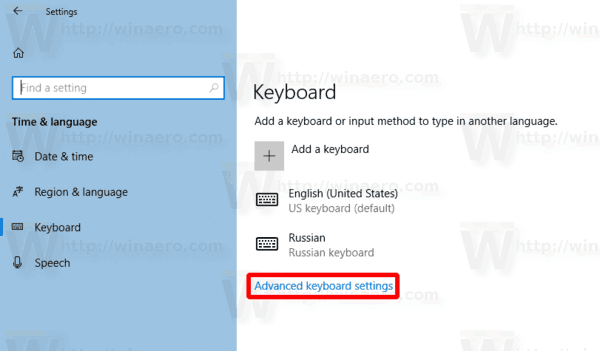
- On the next page, enable the option Use the desktop language bar when it's available.
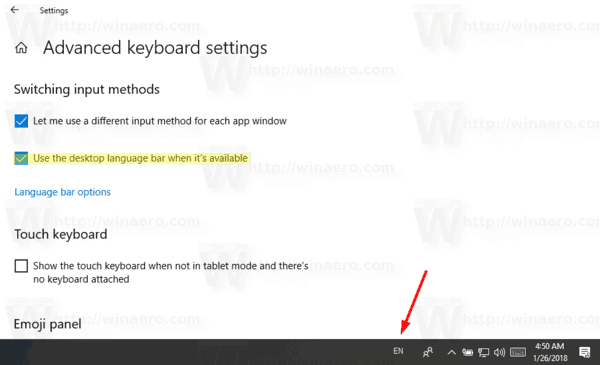
You just enabled the language bar in WIndows 10. By default, it appears docked in the taskbar bar. You can make it floating as follows.
Enable Floating Language Bar
Note: This assumes that you have enabled the Language bar as described above.
- Click on the language icon in the taskbar.
- In the menu, select Show the language bar.
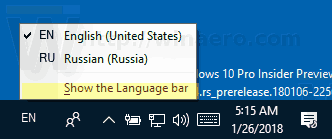 This will make the language bar floating.
This will make the language bar floating.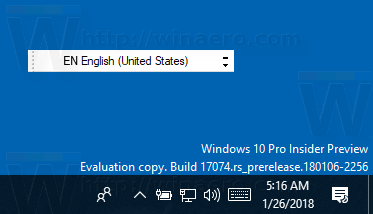
- Alternatively, you click the link Settings - Time & language - Keyboard - Advanced keyboard settings - Language bar options.
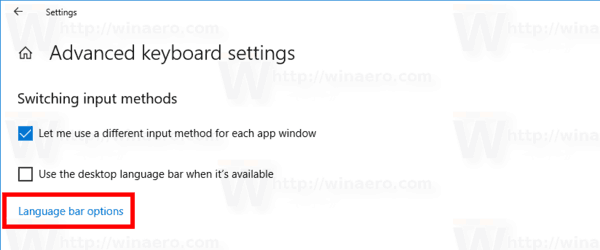
- In the next dialog, select the option "Floating on Desktop" under "Language Bar".
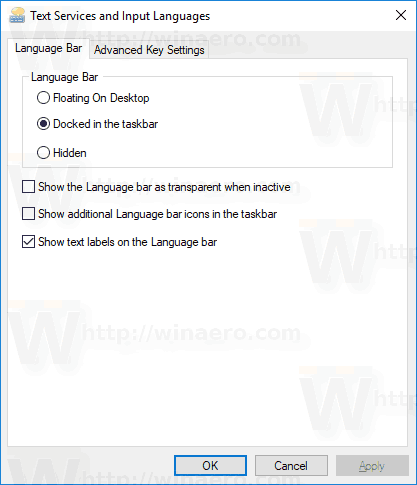
The instructions above are applicable to Windows 10 Build 17074 and above. If you are running an older Windows 10 release, please refer to the following article, which covers the classic Control Panel options: Get the old language indicator and language bar in Windows 10.
That's it.
Support us
Winaero greatly relies on your support. You can help the site keep bringing you interesting and useful content and software by using these options:

Thanks for this post.
My problem is not so much about show one or the other bar but if I choose to show them I want them to always be there so that they don’t expand or reduces the taskbar when I for example switch between an RDP window and desktop. This behavior irritates me a lot. This applies most to the new oversized one.
In short, how to enable _always_ show?
My issue is that I can’t see the language barre attached to the task bar, despite having the option “docked in the task bar” enabled, I’ve tried to disable then to enable it again but nothing seems to change, I’ve even tried to make it float on the desktop and again nothing changed.
Actually I found the solution to my issue, and I didn’t know how to remove my previous message so I’m just gonna put the solution here, and you decide whether or not remove it, what I did is : going to my preferred language, clicking “option” and adding it to the keyboard, I had only one language in the keyboard so I guess the system “thought” it wasn’t necessary to show the language bar.
You saved my time